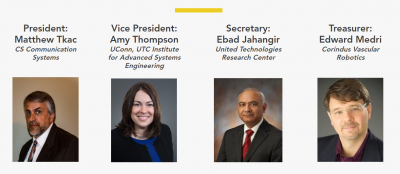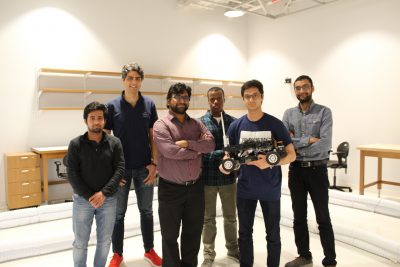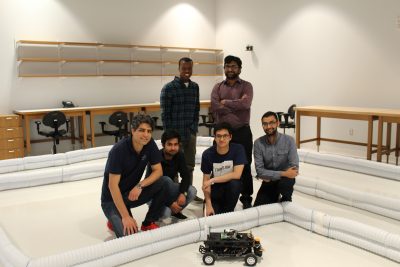
The University of Connecticut’s (UConn) UTC Institute for Advanced Systems Engineering (UTC-IASE) Associate Director of Academic Programs, Amy Thompson, was recently elected as the Vice President of the International Council of Systems Engineering (INCOSE) New England (NE) Chapter. Ebad Jahangir from UTRC was elected as the Secretary, Matt Tkac from CS Communication Systems was elected as President, and Ed Medri from Corindus Vascular Robotics was elected as the Treasurer.
INCOSE is a non-profit membership-based organization, that has dedicated it’s work since its founding in 1990 to advancing the field of systems engineering and to connect systems engineers from around the globe through a united and professional network. The main objective for INCOSE NE chapter will be to help bridge together systems engineers from all over the region across multiple different fields and domains such as energy, transport, aerospace, aviation, marine, defense, and healthcare. In conjunction with these objectives, INCOSE NE is specifically equipped to meet this objective due to the wealth and variety of industry, academic, and professional-based specialties and resources that are located within the northeast region from Connecticut to Maine. The chapter currently has 160+ systems engineering members across six states.
The new INCOSE NE leadership team hopes to build and sustain an invigorated atmosphere for professional growth for systems engineers and to create a strong network of resources to support the chapter in achieving their professional and organizational goals. The chapter will be (1) planning new learning opportunities, professional networking, and social networking events that will attract new members and bring-out existing members; (2) developing resources locally within the states to support local events; (3) building a network across the region with a focus on industry and business diversity; (4) working with chapters outside of the region to bring resources and value into the region; (5) instilling a renewed focus on education and workforce development; and (6) attracting engineers early in their career to get them interested in the work that INCOSE does.
The new INCOSE NE leadership held its first meeting on May 17th, 2018. (https://www.neincose.org/events/incose-new-england-membership-meeting-hartford) This was a multi-site meeting, which connected the new UConn-Hartford Campus site to another host site in Waltham, MA, as well as the guest speaker, David Long, and other remote viewers who could not attend in-person. At the first meeting, the new officers were introduced, a member feedback session was conducted to gauge what INCOSE NE members wanted to see from the chapter in the upcoming year, and a presentation was given by David Long, who is a past INCOSE President. Long’s presentation focused on his view of the field and discipline of systems engineering, and what we have to do as systems engineers to define and refine our roles and discipline in the development of future highly-connected, complex systems. Long proposes “the Engineering of Systems” vs. “Systems Engineering,” as a better perspective on what SE’s do.
General member meetings will begin to be held on a monthly basis, to keep members involved and active. The INCOSE NE leadership will be promoting new local sites in the future to connect and participate in meetings in New Hampshire, Rhode Island, Vermont, and Maine areas. More information on upcoming events and other information about INCOSE NE can be found on its website: https://www.neincose.org/

